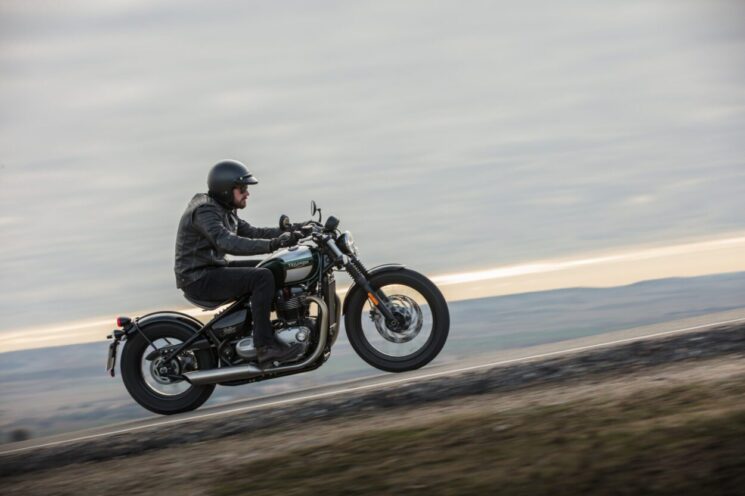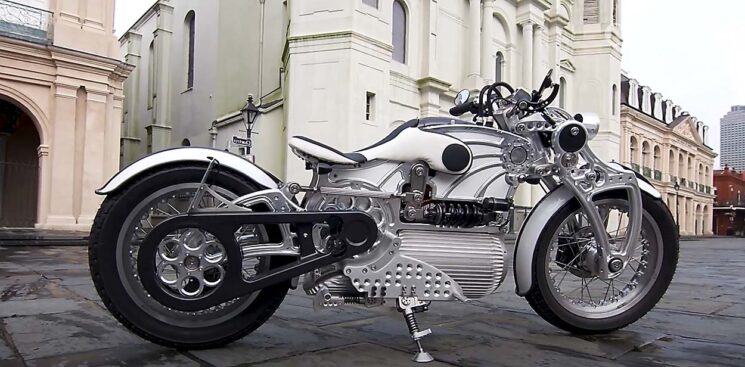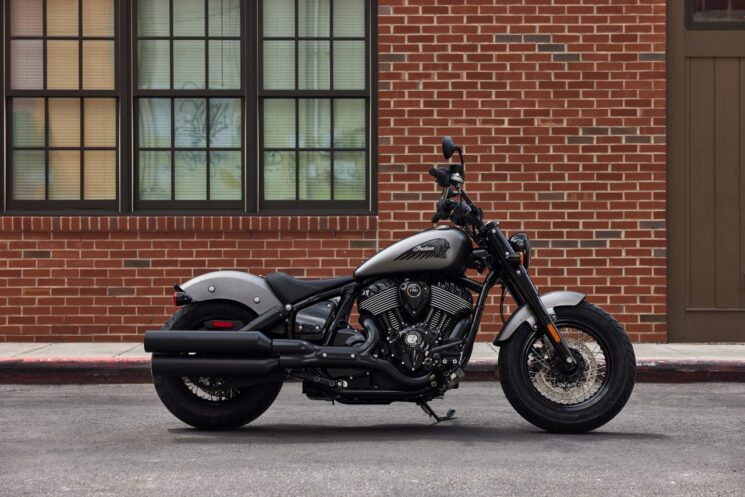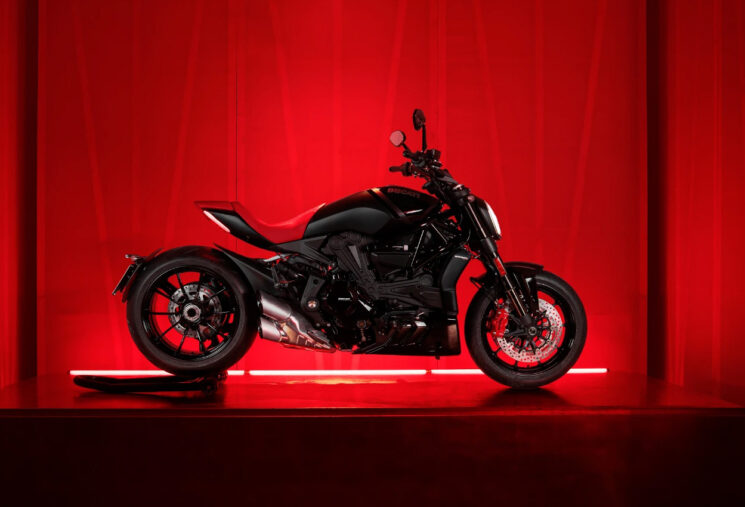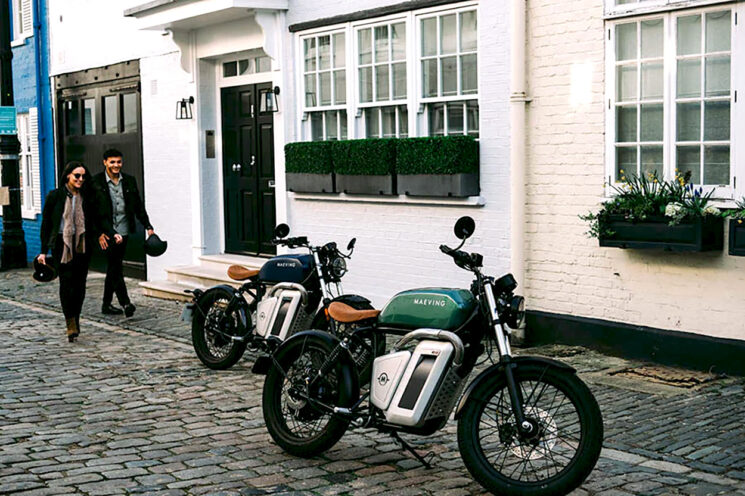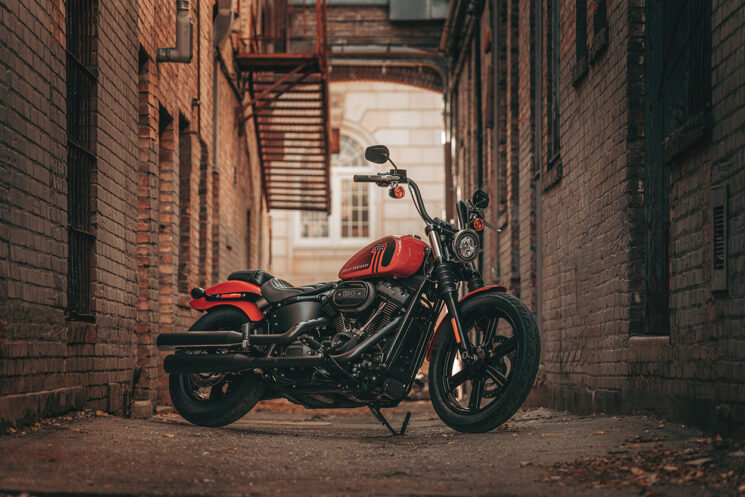Cream of the crop: A Ducati 749 café racer from Estonia

Just like any historic marque, Ducati has had its fair share of divisive motorcycle designs. The Ducati 749 and 999 spring to mind. Penned by the legendary Pierre Terblanche, they were a bold step away from the design language established by the iconic 916.
The sharp fairing and stacked headlight design shared by the 749 and 999 divided opinion. But it ultimately didn’t matter; both eventually proved to be highly capable sportbikes. Even the smaller 749 made a respectable 108 hp in stock trim, with the upgraded S and R models good for 116 hp and 121 hp each.

This custom 2005 Ducati 749S has strayed far from Terblanche’s original design, but it hasn’t sacrificed an iota of that performance. In fact, it actually goes better than before.
Hardcore Ducatisti need not weep; the donor bike was wrecked when the owner, Kaspar Ilves, got his hands on it. Kaspar is based in Estonia, where he builds custom bikes as a hobby under the moniker of Kalapea Garage. This café racer was a personal project, built on-and-off over the course of six years.

Kaspar’s been tinkering on bikes since he was a teen, and used to buy, fix and flip whatever he could get his hands on. For the past decade he’s taken on more serious builds (and commissions), up-skilling along the way. So everything you see on this bike, from the engine work right up to the paint, was done by Kaspar.
“I built it for myself, so there were no restraints,” he tells us. “The roadworthiness was irrelevant, so it was just for fun. I got the donor and had always wanted a Ducati SportClassic, saw some cool Sultans of Sprint drag bikes at the Bike Shed show that I liked, and also had the right parts on the shelf—so that’s how it came about.”

Kaspar dragged the damaged 749S into his garage, and proceeded to bin anything he wasn’t planning on using. The only recognizable 749 parts are the trellis frame, sculpted fuel tank and L-twin engine.
The engine’s hardly stock though. It now sports ported heads, lighter rods, a lightened flywheel, 12-point injectors, a Ducabike slipper clutch, and a programmable ECU with launch control. The exhaust system features custom pie-cut headers, terminating in an aftermarket muffler.

Up front, Kaspar repurposed the 749’s front wheel and twin Brembo brakes. But the upside-down Öhlins forks are from an Aprilia RSV, held in place by a set of CNC-machined yokes.
Keen eyes will notice that the Ducati’s wheelbase is a little longer than usual. Kaspar adapted the single-sided swingarm (and rear wheel) from an MV Agusta Brutale to fit, adding 10 cm to the swingarm length. It’s hooked up to the 749’s OEM Showa shock.

The rear tire’s a curious choice; inspired by sprint racers, Kaspar opted for a Shinko drag tire. Then he added white lettering to draw even more attention to it. “To be honest, it was more for the ‘ ’ effect than an actual need for it,” he admits.
’ effect than an actual need for it,” he admits.
In his defense, it’s probably the only nonsensical choice on this bike. Kitted with carbon fiber fenders at both ends, it’s a surprisingly practical build for something that’s not road legal.

But it’s the custom bodywork that really shines on this handsome café-slash-dragster. The fairing comes straight from a Ducati PaulSmart 1000 LE, but it’s been massaged to fit the 749. It also features a removable headlight cover, with an LED unit tucked behind it.
A twin radiator setup also hides behind the fairing. Kaspar built a custom bracket that not only holds the fairing, dashboard and radiators, but doubles up as an expansion tank too.

The floating tail section’s another slick detail. Kaspar first created a hand-shaped prototype, then 3D-scanned it and tweaked it digitally. That allowed him to CNC cut the rear’s hidden subframe, and produce a mold to shape the fiberglass tail unit over.
The design complements the stock 749 fuel tank perfectly. Plus it fits so snugly, that it could easily be mistaken for a monocoque body from a distance.

The bike is littered with neat little parts—like the custom battery tray and foot controls. Kaspar went all-out on the controls too, opting for carbon fiber clip-ons, Ducabike race-style switches and a Speedhut GPS-based speedo.
The livery is an intoxicating combination of an off-white base coat and a red frame, with a few subtle variations thrown into the mix. Adding a touch of gold to the wheels was an inspired choice too.

Unsurprisingly, Kaspar’s Ducati has already started racking up accolades. He debuted it at Estonia’s local AMD World Championship affiliate event, where it took home the gold. (It also secured an invite to the main event, which has unfortunately been postponed.)
But despite its popularity, Kaspar says that he’s unsure about the 749’s destiny.

“It’s obviously not a daily commuter, but it can ride. It’s not an actual drag bike, but it has potential. It’s not furniture, but it looks good.”
“So it’s a work in progress to figure out what I will do with it.”
Kalapea Garage Instagram

Continue reading...

Just like any historic marque, Ducati has had its fair share of divisive motorcycle designs. The Ducati 749 and 999 spring to mind. Penned by the legendary Pierre Terblanche, they were a bold step away from the design language established by the iconic 916.
The sharp fairing and stacked headlight design shared by the 749 and 999 divided opinion. But it ultimately didn’t matter; both eventually proved to be highly capable sportbikes. Even the smaller 749 made a respectable 108 hp in stock trim, with the upgraded S and R models good for 116 hp and 121 hp each.

This custom 2005 Ducati 749S has strayed far from Terblanche’s original design, but it hasn’t sacrificed an iota of that performance. In fact, it actually goes better than before.
Hardcore Ducatisti need not weep; the donor bike was wrecked when the owner, Kaspar Ilves, got his hands on it. Kaspar is based in Estonia, where he builds custom bikes as a hobby under the moniker of Kalapea Garage. This café racer was a personal project, built on-and-off over the course of six years.

Kaspar’s been tinkering on bikes since he was a teen, and used to buy, fix and flip whatever he could get his hands on. For the past decade he’s taken on more serious builds (and commissions), up-skilling along the way. So everything you see on this bike, from the engine work right up to the paint, was done by Kaspar.
“I built it for myself, so there were no restraints,” he tells us. “The roadworthiness was irrelevant, so it was just for fun. I got the donor and had always wanted a Ducati SportClassic, saw some cool Sultans of Sprint drag bikes at the Bike Shed show that I liked, and also had the right parts on the shelf—so that’s how it came about.”

Kaspar dragged the damaged 749S into his garage, and proceeded to bin anything he wasn’t planning on using. The only recognizable 749 parts are the trellis frame, sculpted fuel tank and L-twin engine.
The engine’s hardly stock though. It now sports ported heads, lighter rods, a lightened flywheel, 12-point injectors, a Ducabike slipper clutch, and a programmable ECU with launch control. The exhaust system features custom pie-cut headers, terminating in an aftermarket muffler.

Up front, Kaspar repurposed the 749’s front wheel and twin Brembo brakes. But the upside-down Öhlins forks are from an Aprilia RSV, held in place by a set of CNC-machined yokes.
Keen eyes will notice that the Ducati’s wheelbase is a little longer than usual. Kaspar adapted the single-sided swingarm (and rear wheel) from an MV Agusta Brutale to fit, adding 10 cm to the swingarm length. It’s hooked up to the 749’s OEM Showa shock.

The rear tire’s a curious choice; inspired by sprint racers, Kaspar opted for a Shinko drag tire. Then he added white lettering to draw even more attention to it. “To be honest, it was more for the ‘
 ’ effect than an actual need for it,” he admits.
’ effect than an actual need for it,” he admits.In his defense, it’s probably the only nonsensical choice on this bike. Kitted with carbon fiber fenders at both ends, it’s a surprisingly practical build for something that’s not road legal.

But it’s the custom bodywork that really shines on this handsome café-slash-dragster. The fairing comes straight from a Ducati PaulSmart 1000 LE, but it’s been massaged to fit the 749. It also features a removable headlight cover, with an LED unit tucked behind it.
A twin radiator setup also hides behind the fairing. Kaspar built a custom bracket that not only holds the fairing, dashboard and radiators, but doubles up as an expansion tank too.

The floating tail section’s another slick detail. Kaspar first created a hand-shaped prototype, then 3D-scanned it and tweaked it digitally. That allowed him to CNC cut the rear’s hidden subframe, and produce a mold to shape the fiberglass tail unit over.
The design complements the stock 749 fuel tank perfectly. Plus it fits so snugly, that it could easily be mistaken for a monocoque body from a distance.

The bike is littered with neat little parts—like the custom battery tray and foot controls. Kaspar went all-out on the controls too, opting for carbon fiber clip-ons, Ducabike race-style switches and a Speedhut GPS-based speedo.
The livery is an intoxicating combination of an off-white base coat and a red frame, with a few subtle variations thrown into the mix. Adding a touch of gold to the wheels was an inspired choice too.

Unsurprisingly, Kaspar’s Ducati has already started racking up accolades. He debuted it at Estonia’s local AMD World Championship affiliate event, where it took home the gold. (It also secured an invite to the main event, which has unfortunately been postponed.)
But despite its popularity, Kaspar says that he’s unsure about the 749’s destiny.

“It’s obviously not a daily commuter, but it can ride. It’s not an actual drag bike, but it has potential. It’s not furniture, but it looks good.”
“So it’s a work in progress to figure out what I will do with it.”
Kalapea Garage Instagram

Continue reading...





















































